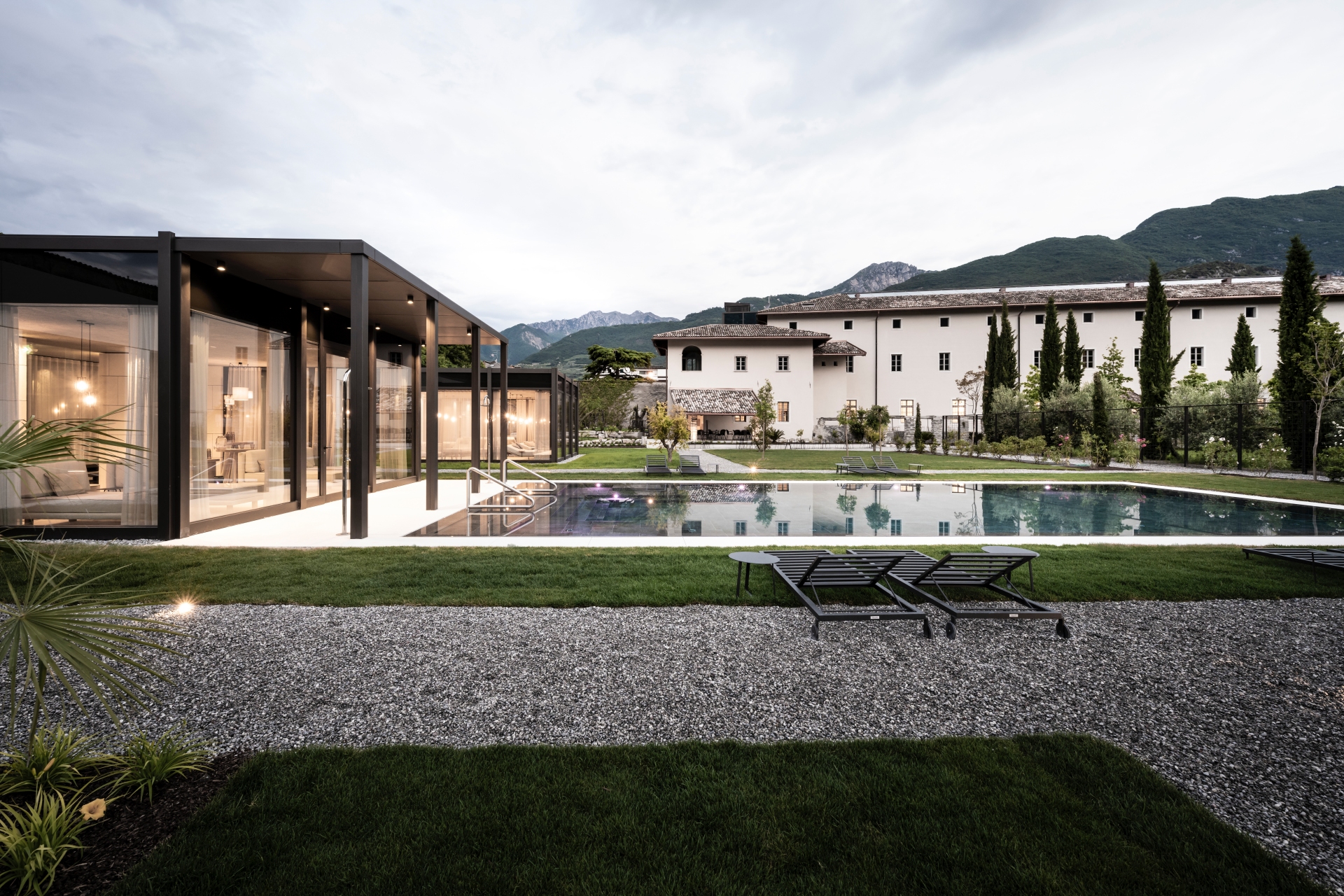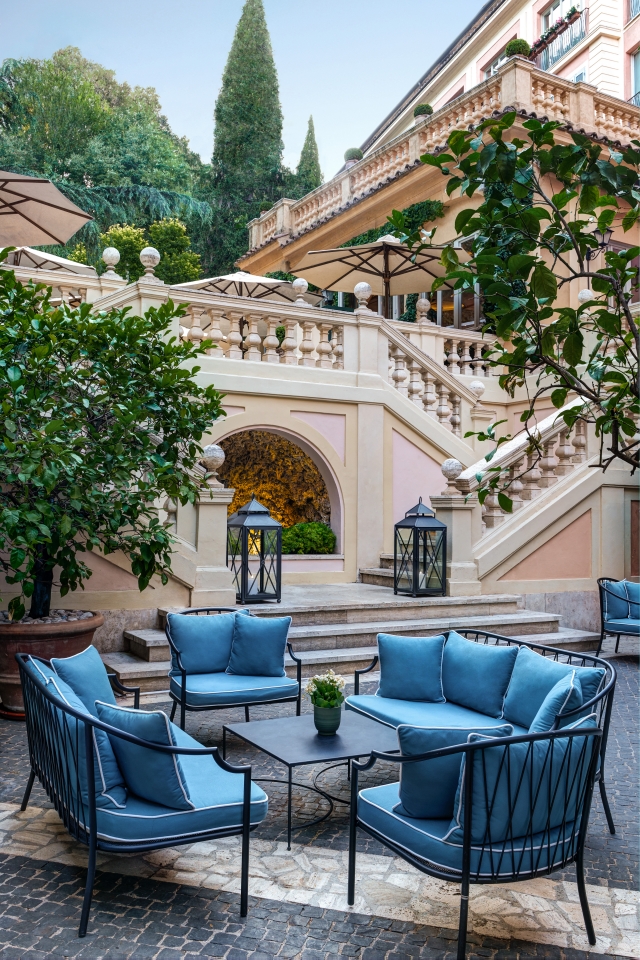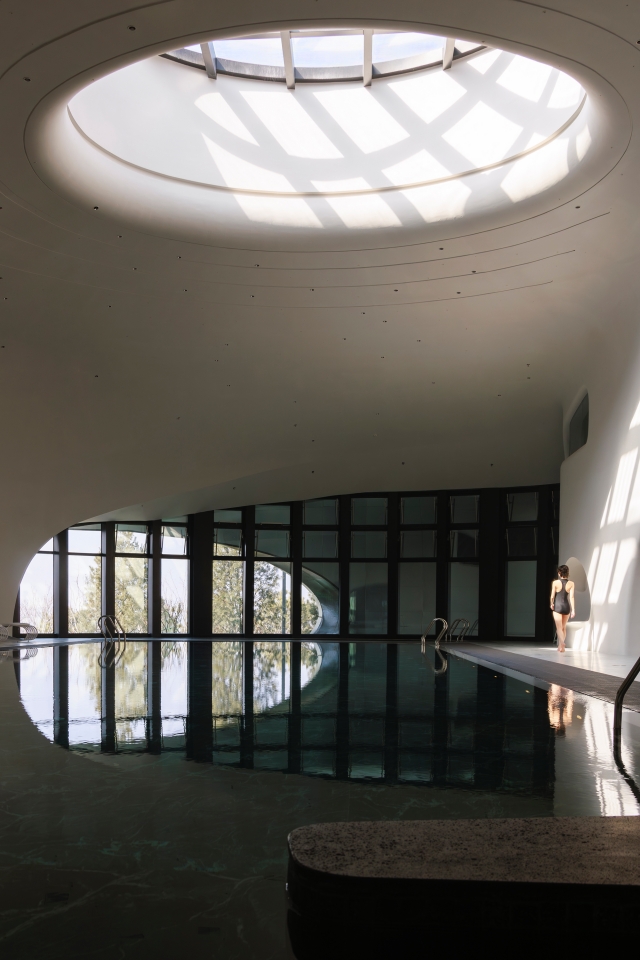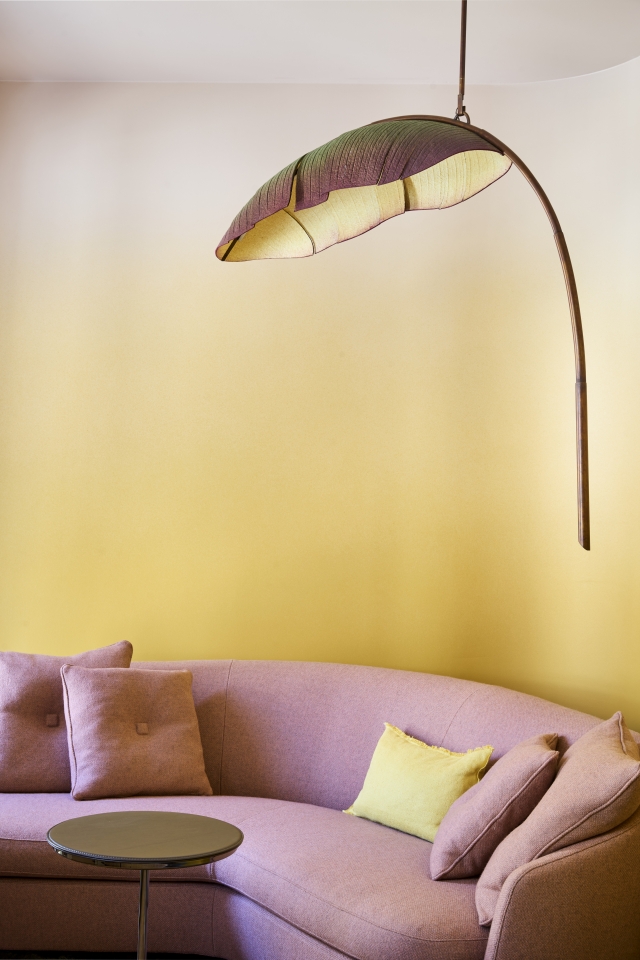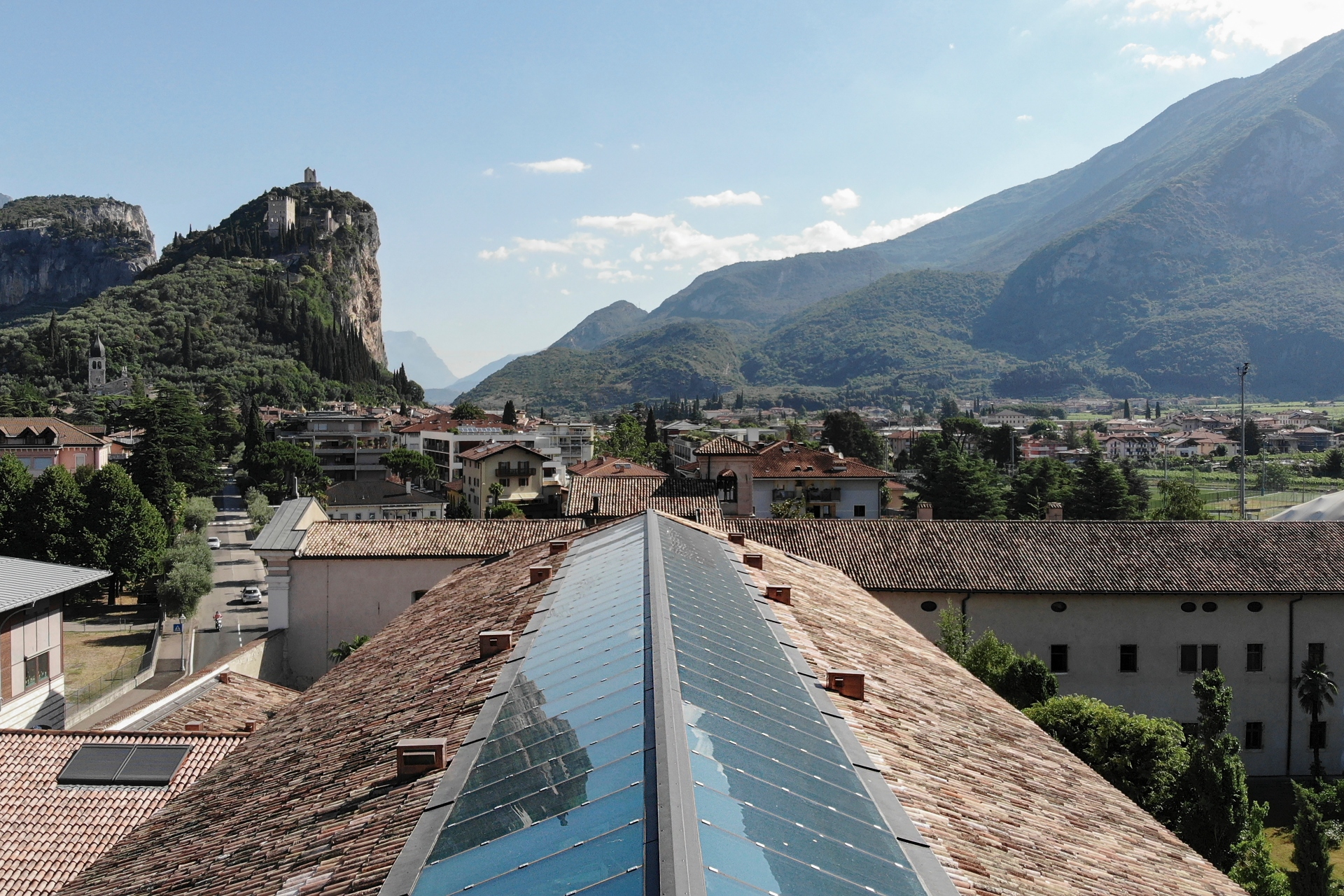
To restore the majestic power and spiritual dimension of an old monastic centre and make its most distinctive elements the main features of a unique and charming hotel, was the mission pursued by noa* in this project to renovate the Monastery Serve di Maria Addolorata in the centre of Arco, situated at the northern tip of Lake Garda. This noble complex with its extensive garden, is encompassed by a high surrounding wall and dates all the way back to the second half of the 17th century. Half of the Monastery building, which also hosts a church and cloister, where nuns continue to live, has been left untouched and in 2020, work on the hotel project began in close collaboration with the Trento Office of Cultural Heritage.
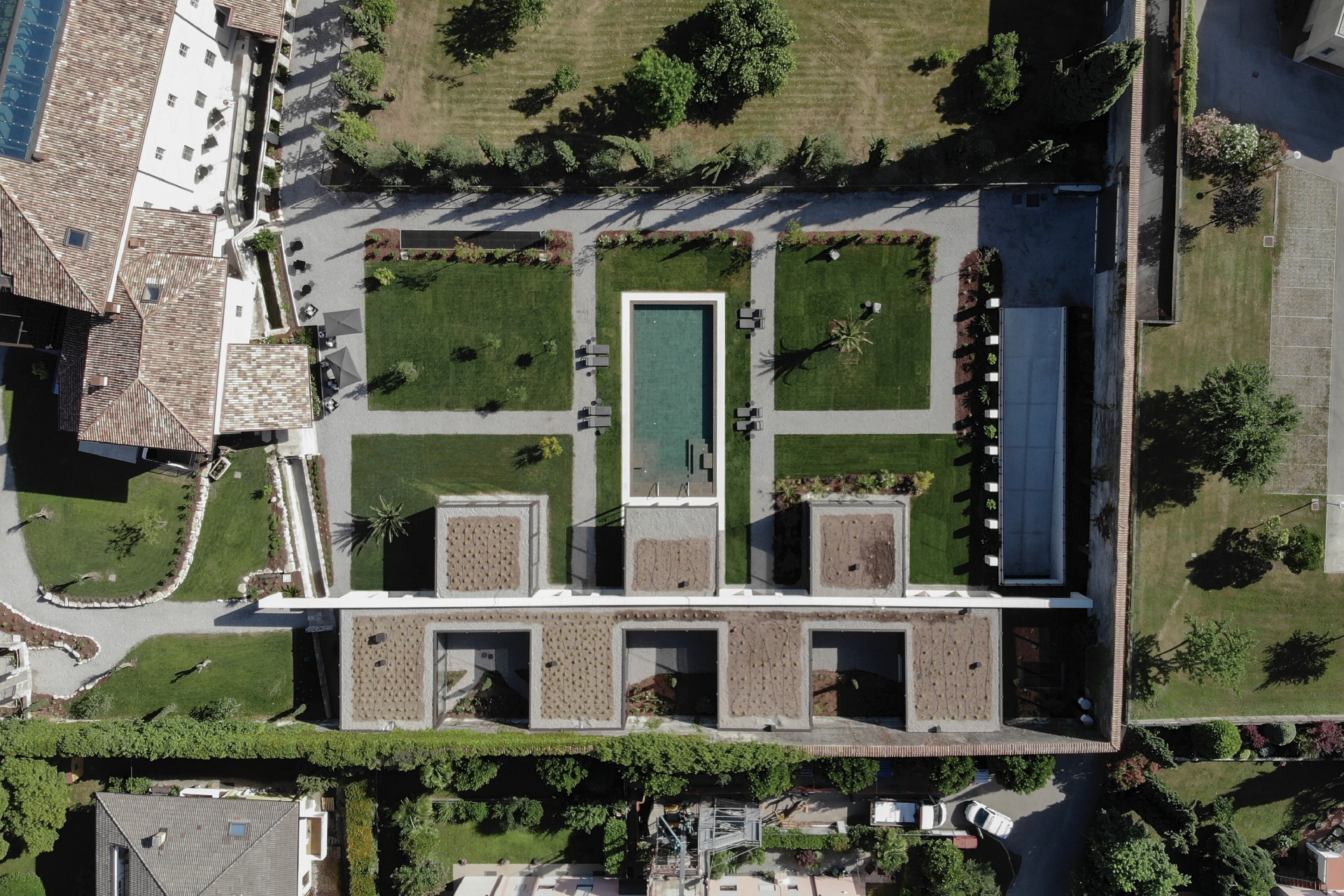
“The majesty and rigour of the architecture, the long corridors, the vaulted ceilings, all of these features combine to give these spaces a real olde-worlde feel”, explains Francesco Padovan, noa*’s architect who developed the project. The work consisted of two main phases:
- the renovation and conversion of the monastery and its interiors into a hotel, achieved by creating common spaces (reception, lobby, breakfast room, bar area and kitchen) on the ground floor with the rooms mainly distributed between the first floor and the loft.
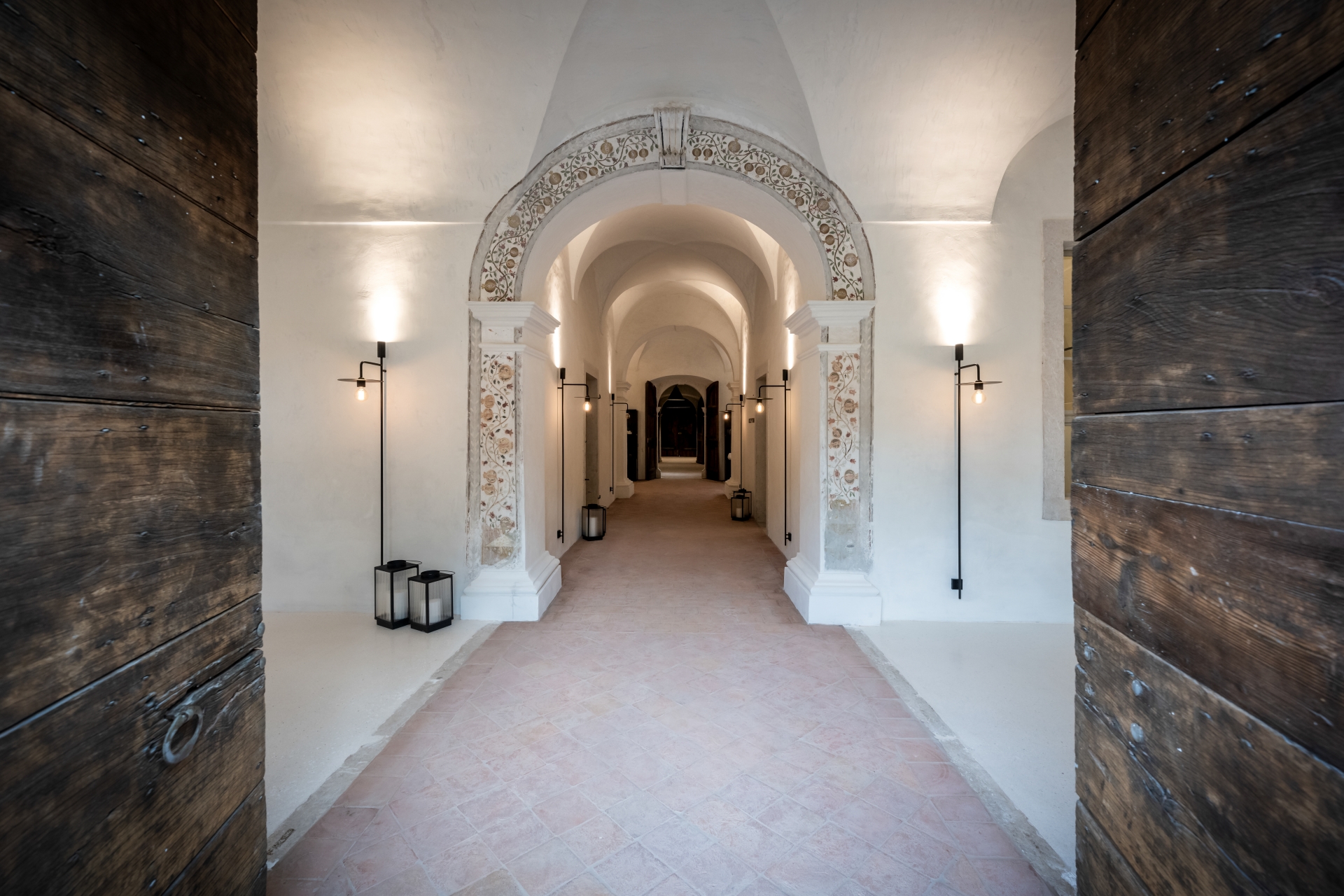
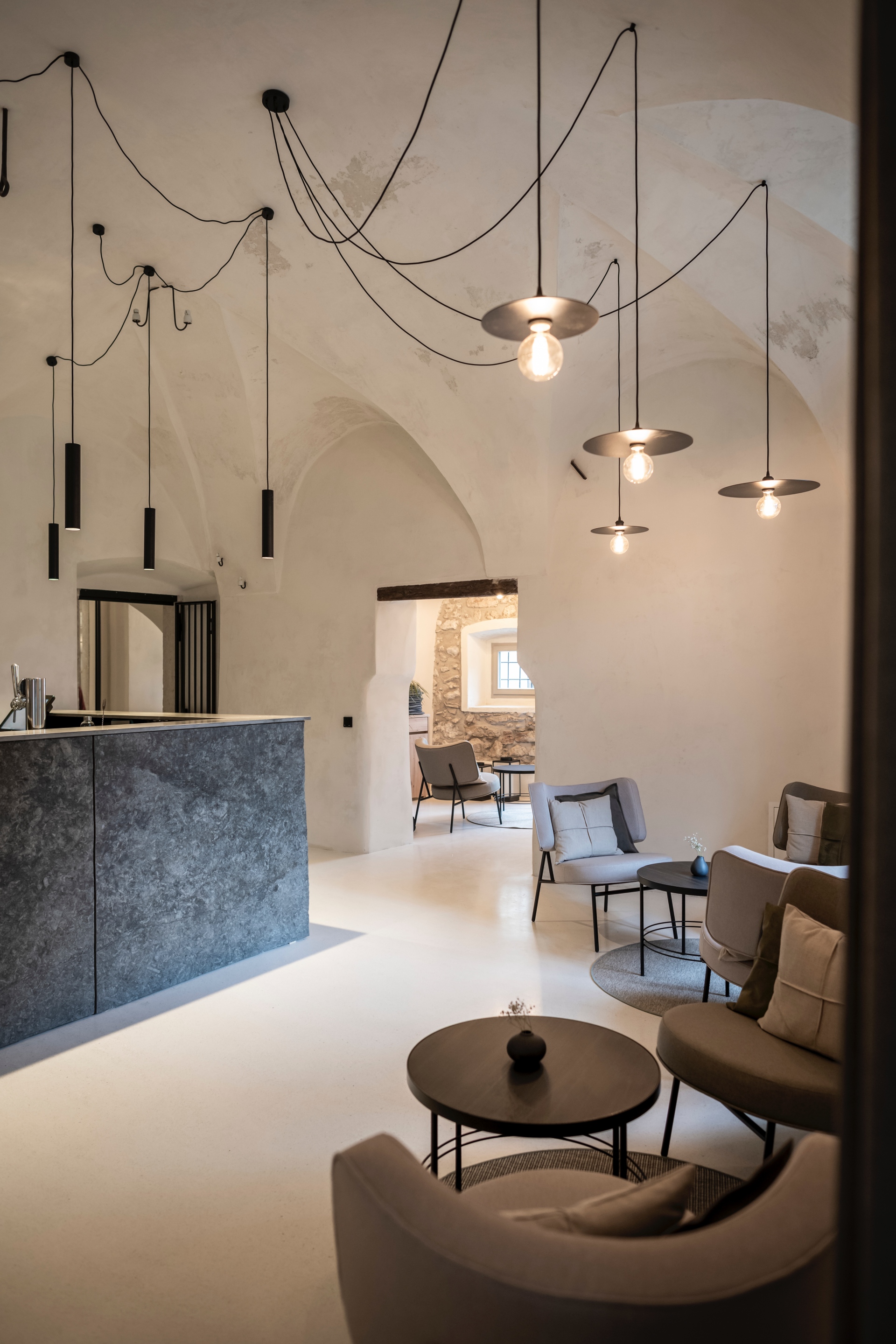
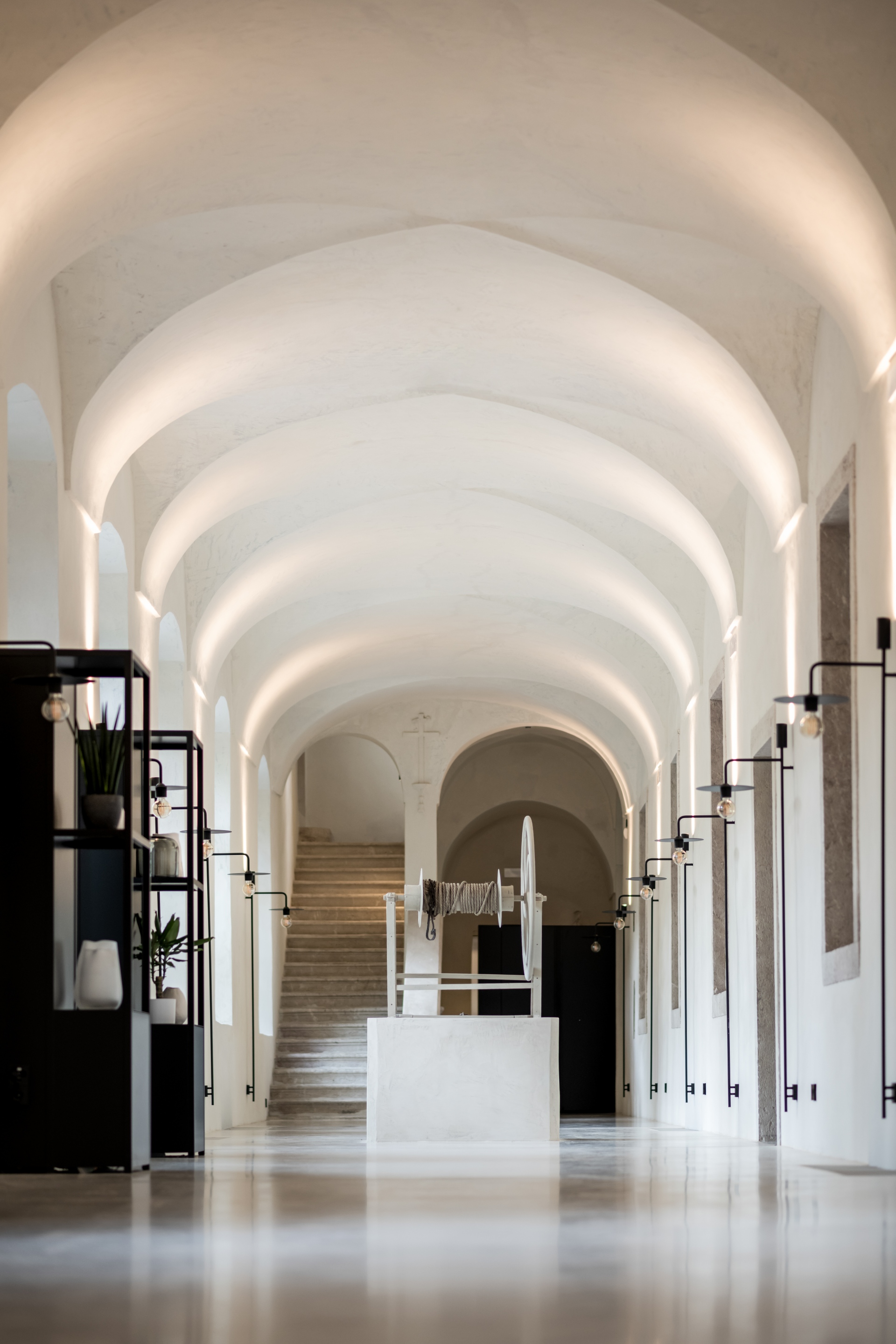
- the development of a new wellness area within the lush garden: 500 square metres of relaxation rooms, treatment rooms, saunas and a wellness course with a steam bath.
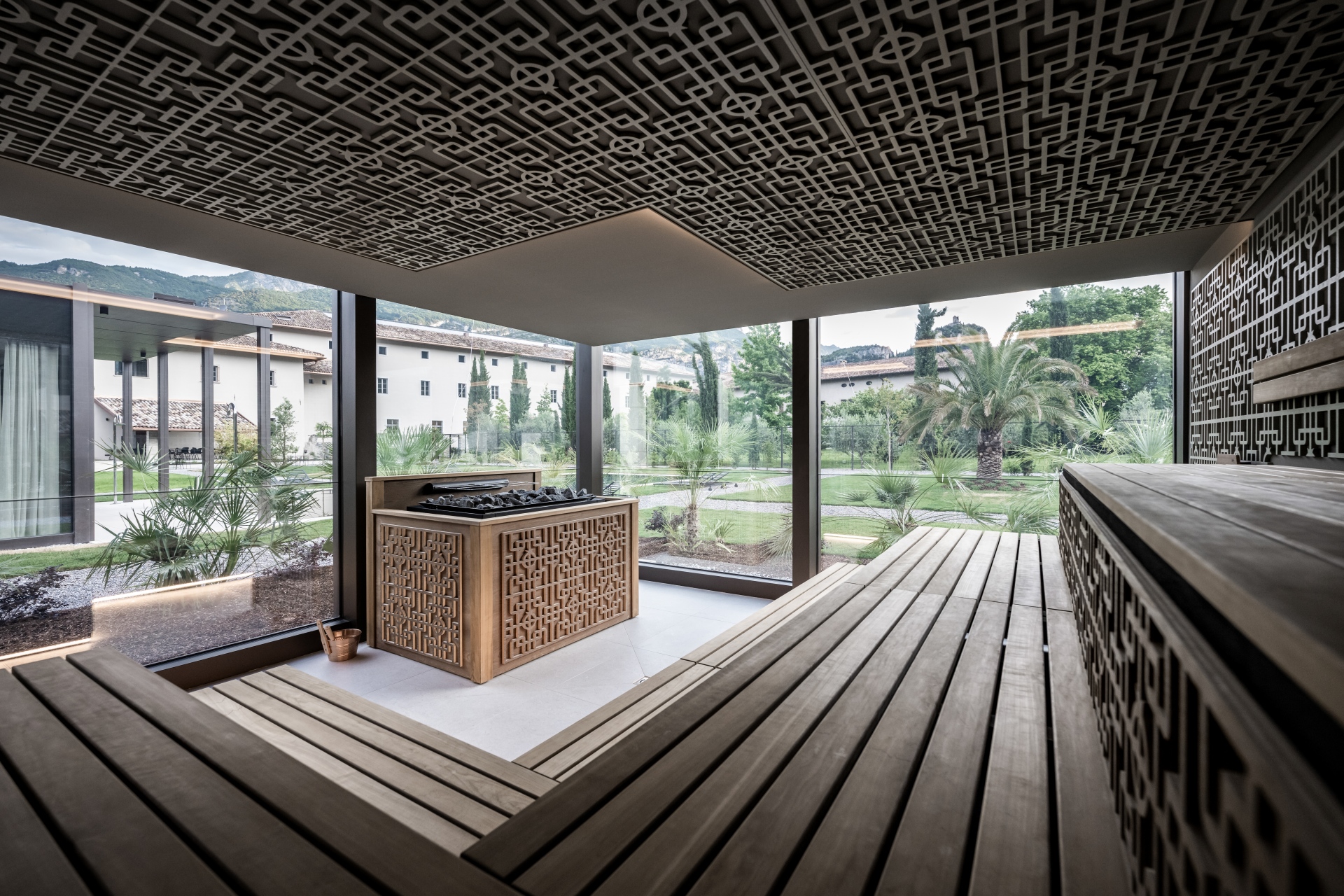
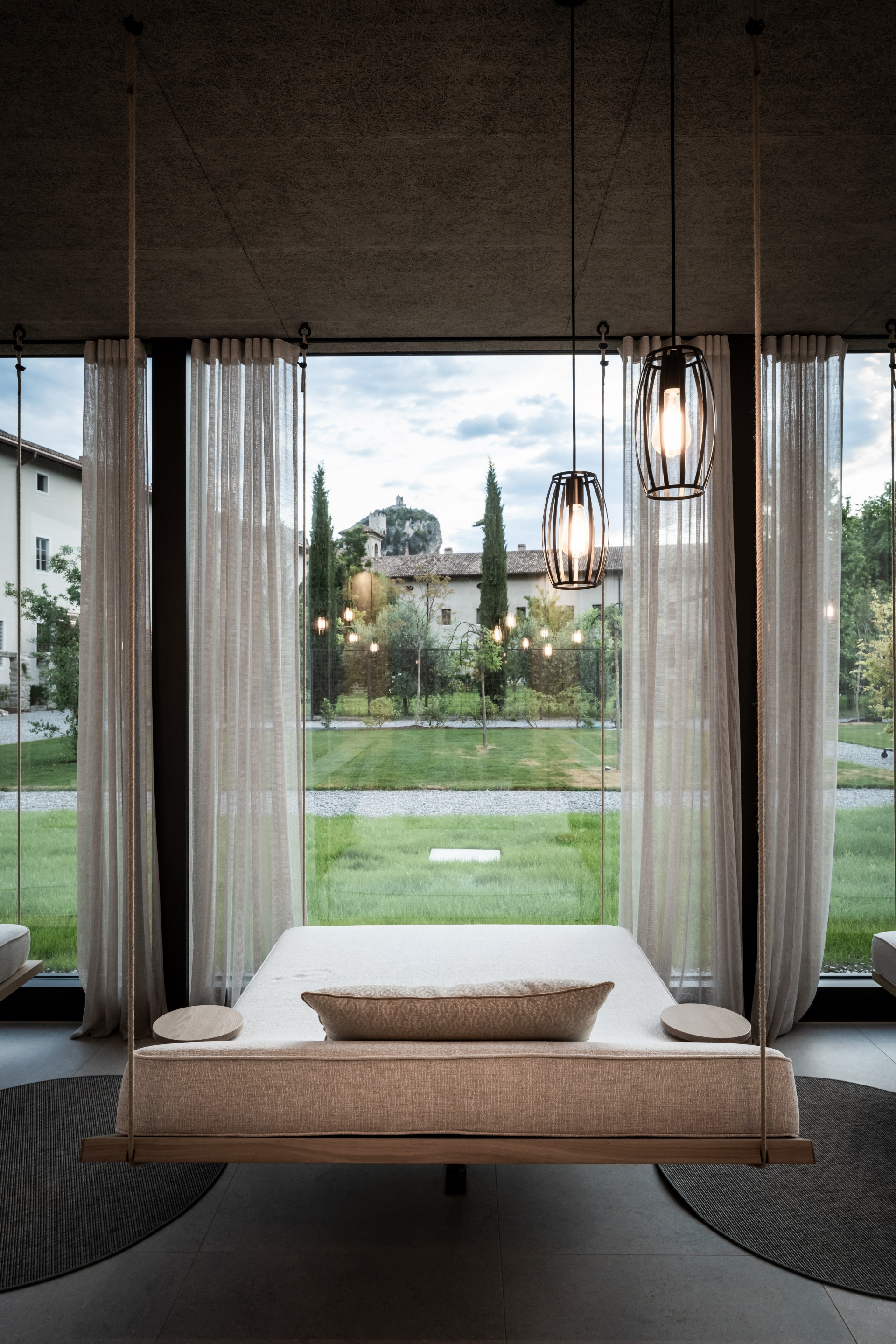
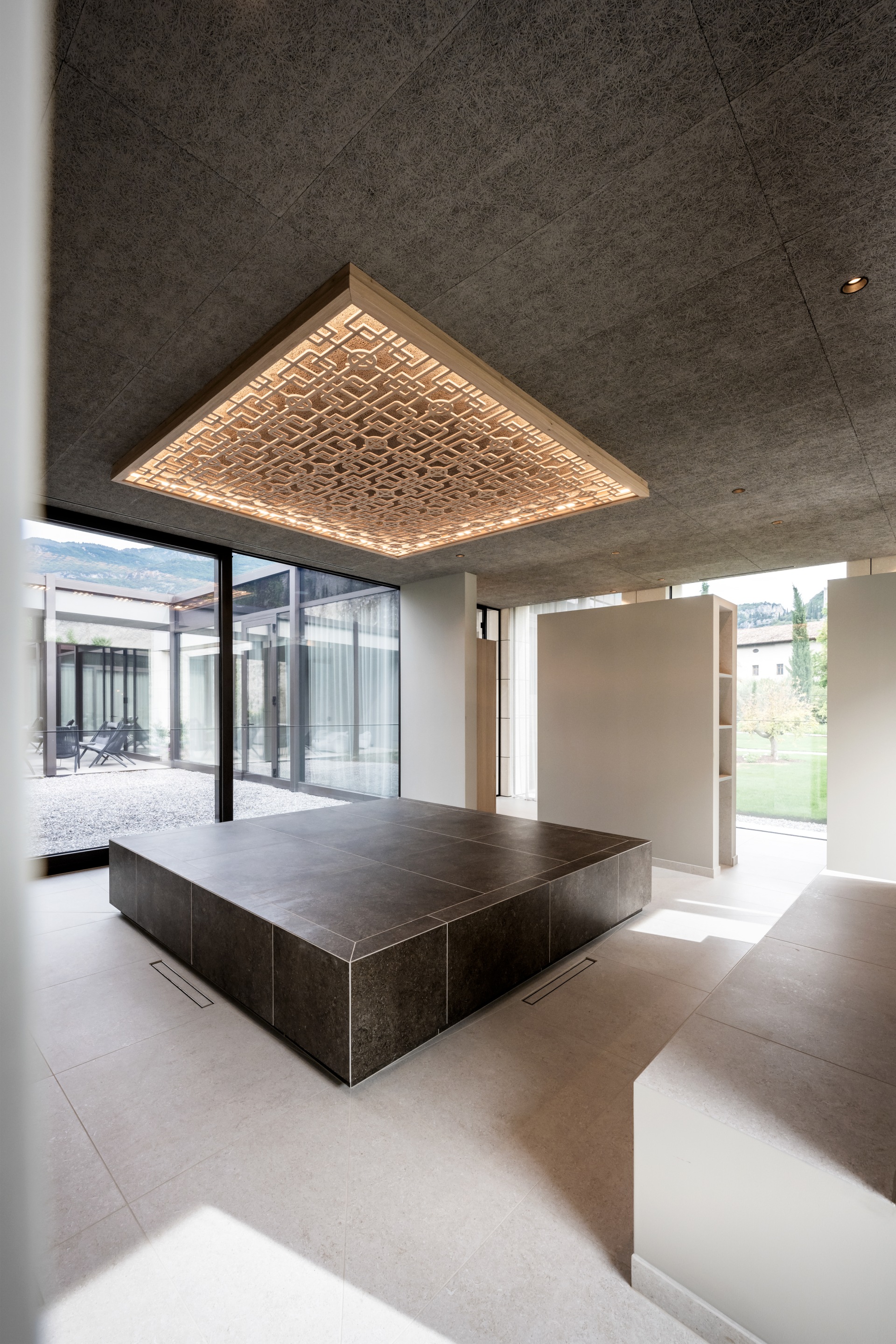
These interventions have resulted in a very particular hotel, as Padovan highlights: “A refuge that takes you back in time, closely centred around the history and the particular features of this place. And where every construction choice, every material and detail, has been studied to draw on the majesty of the pre-existing context, exalting it and giving it new life”.
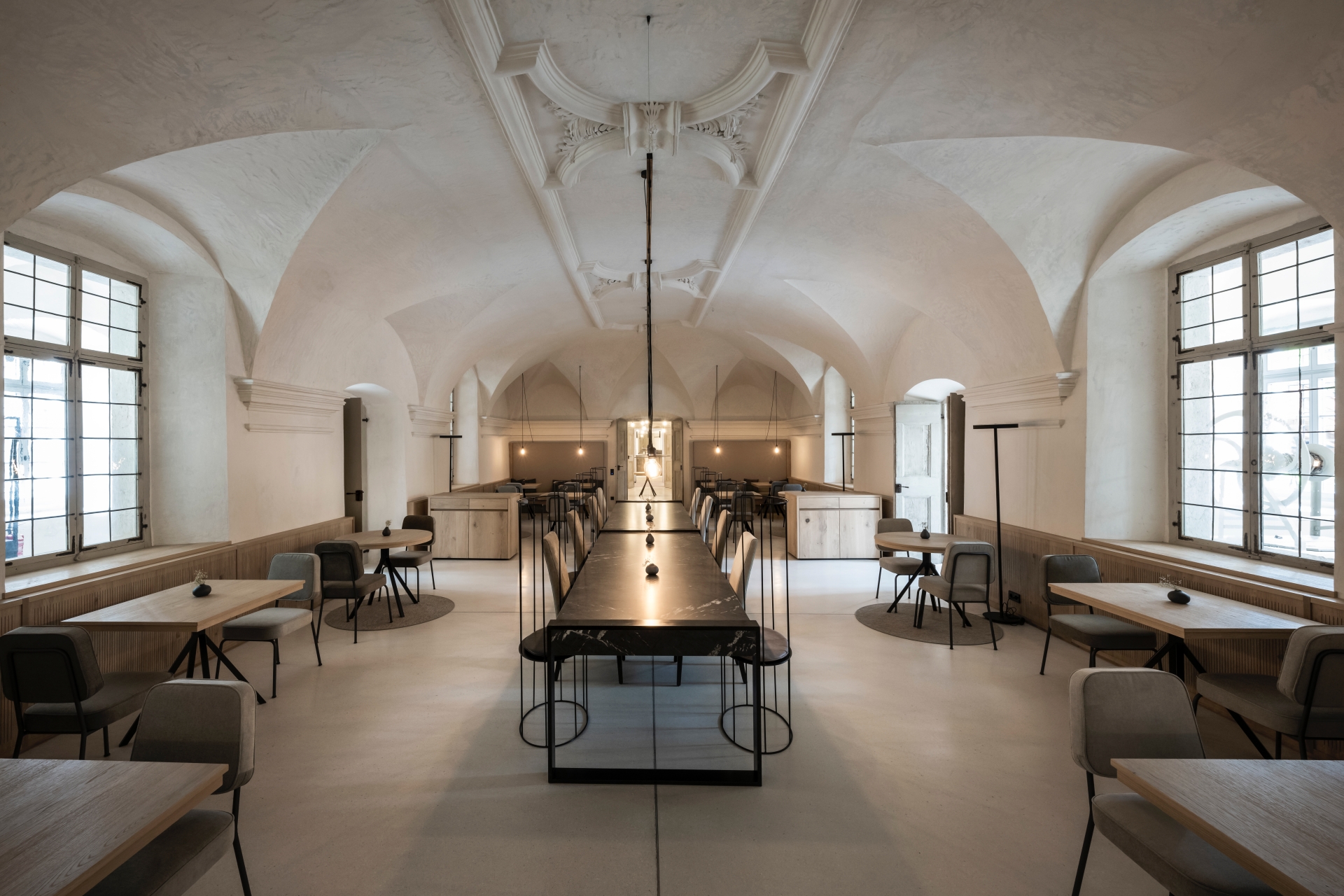
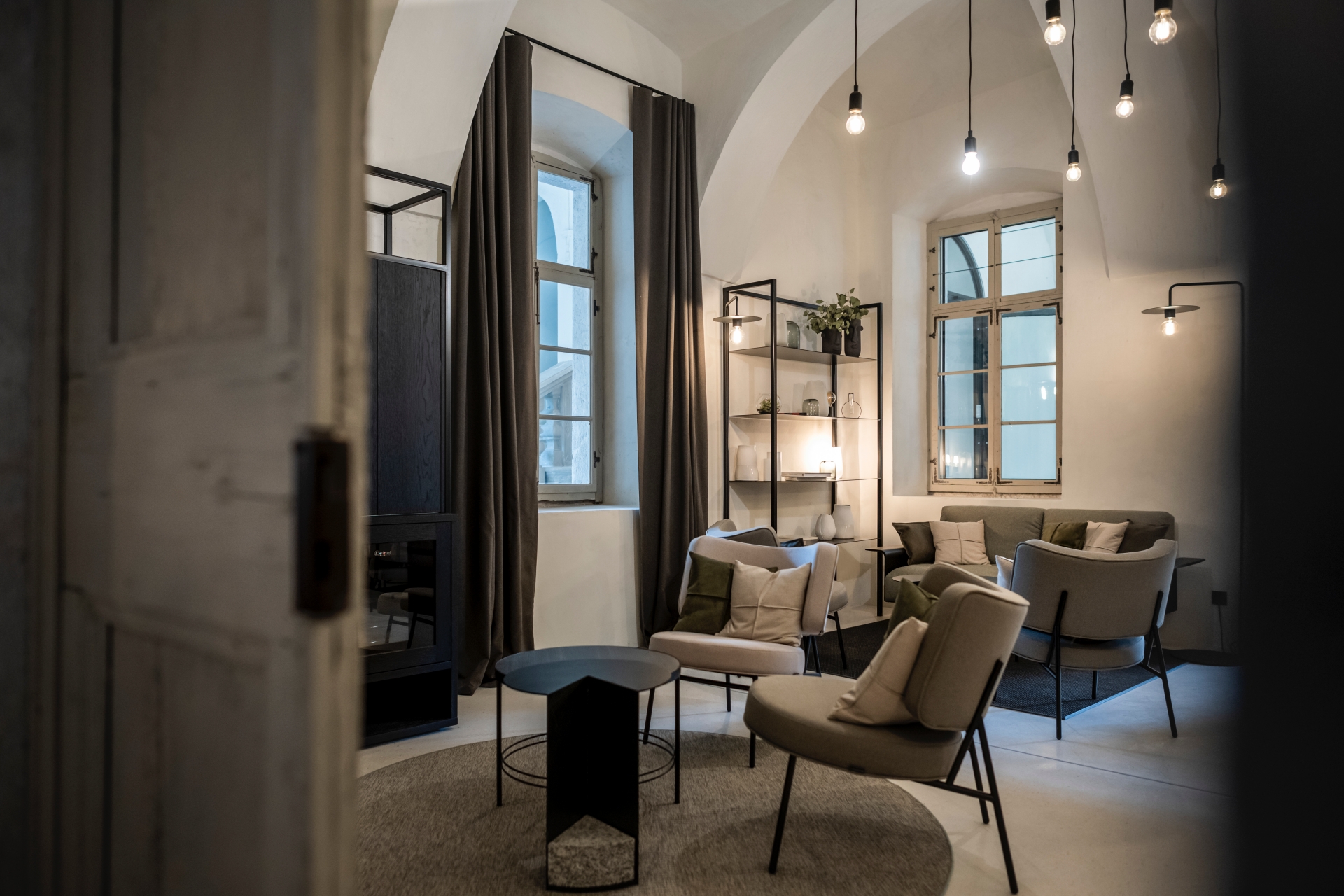
With its 40 rooms (including 2 suites), the Monastero Arx Vivendi - the name of the new hotel - offers hospitality in full harmony with the spectacular location. From a design perspective the underlying idea was to maintain the typical monastery architecture, preserving the original design of the internal paths and extending its geometrical rigour to the new volumes, paying close attention to the choice of materials and colours. “This was a design philosophy that guided us and helped us maintain the compositional, static and visual clarity that makes a monastery such a special place”, explains Padovan. That’s not all. The surrounding agricultural landscape also played an important role, inspiring the architecture of the light glass constructions that house the wellness area and creating a symbiotic relationship between history and the land.
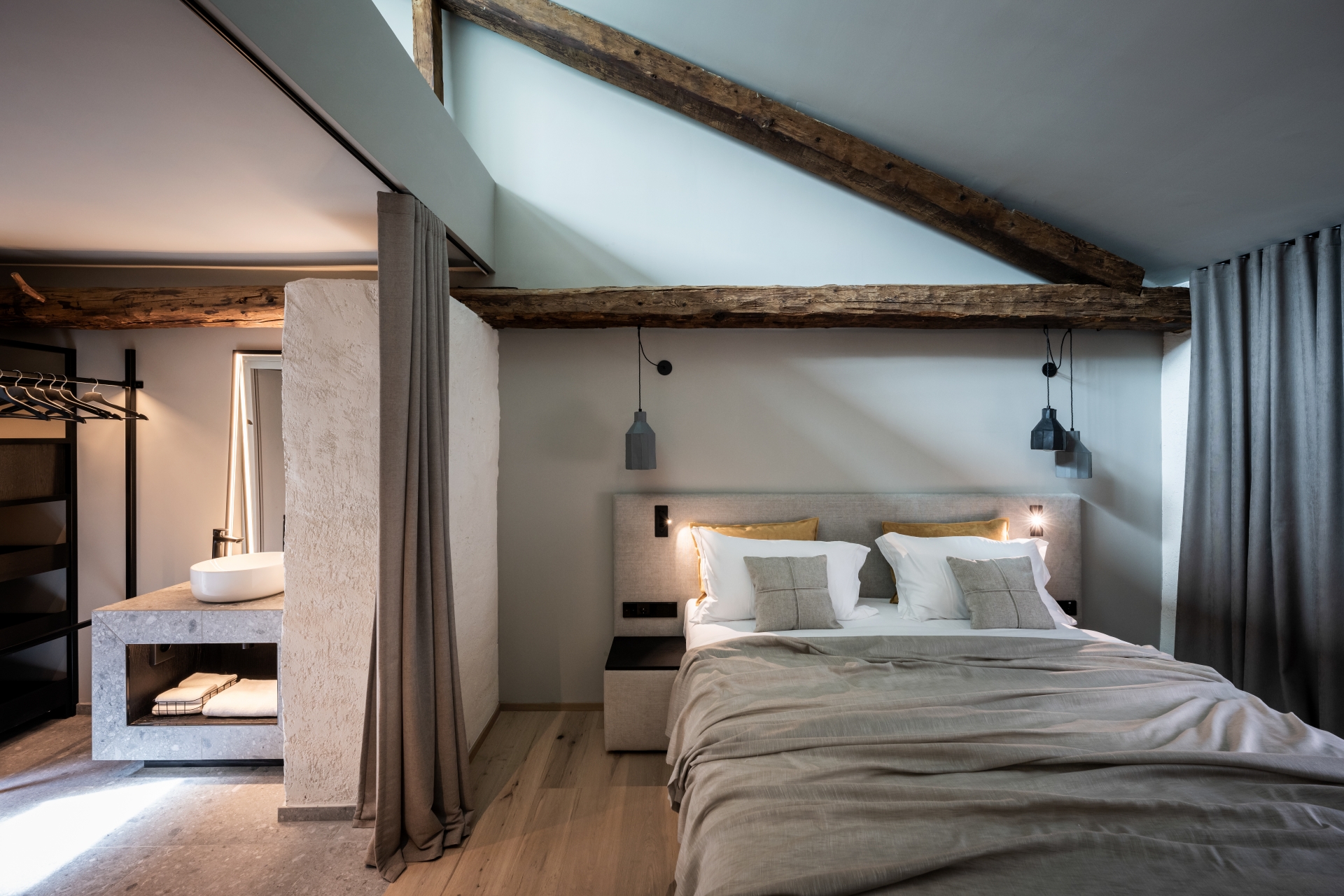
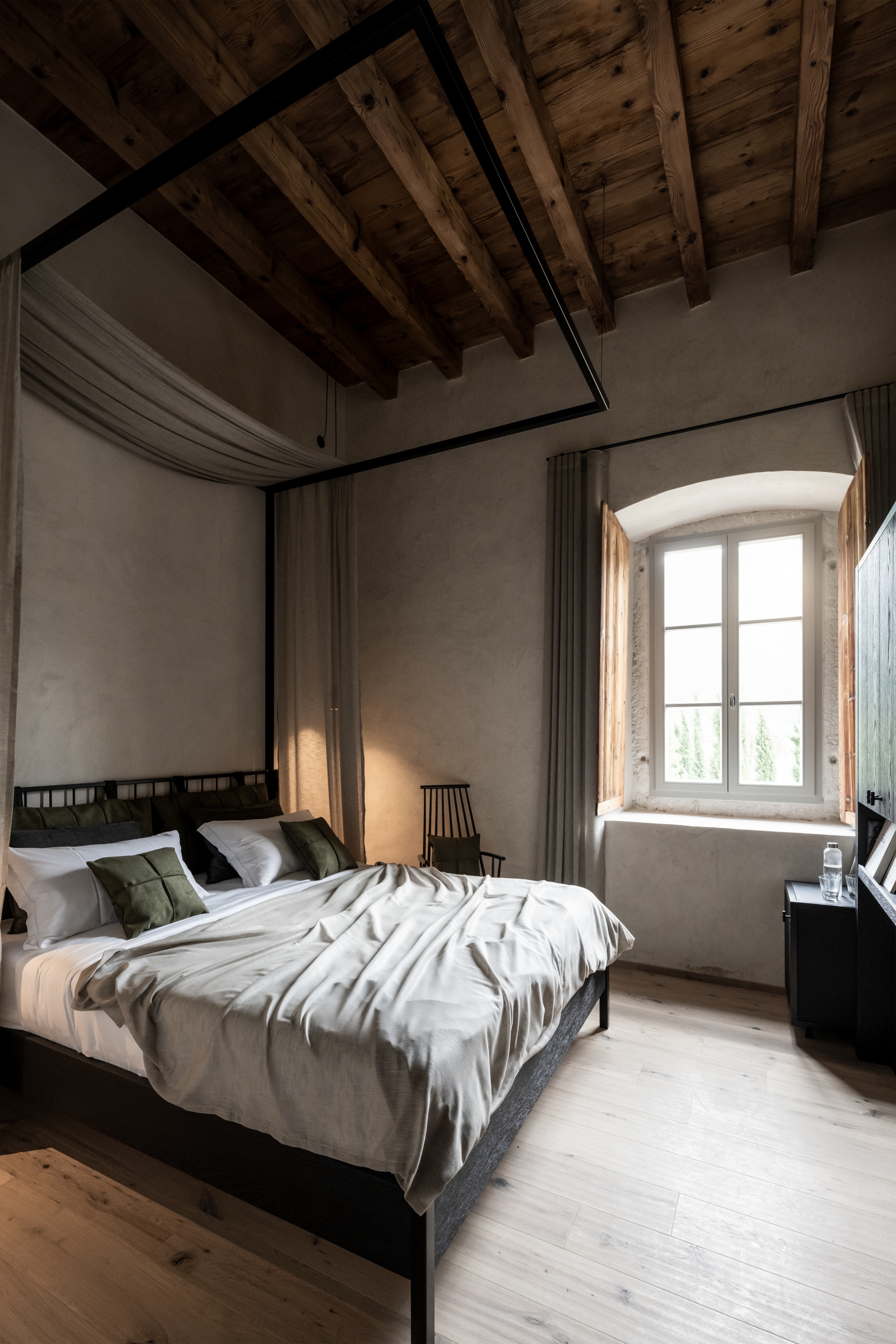
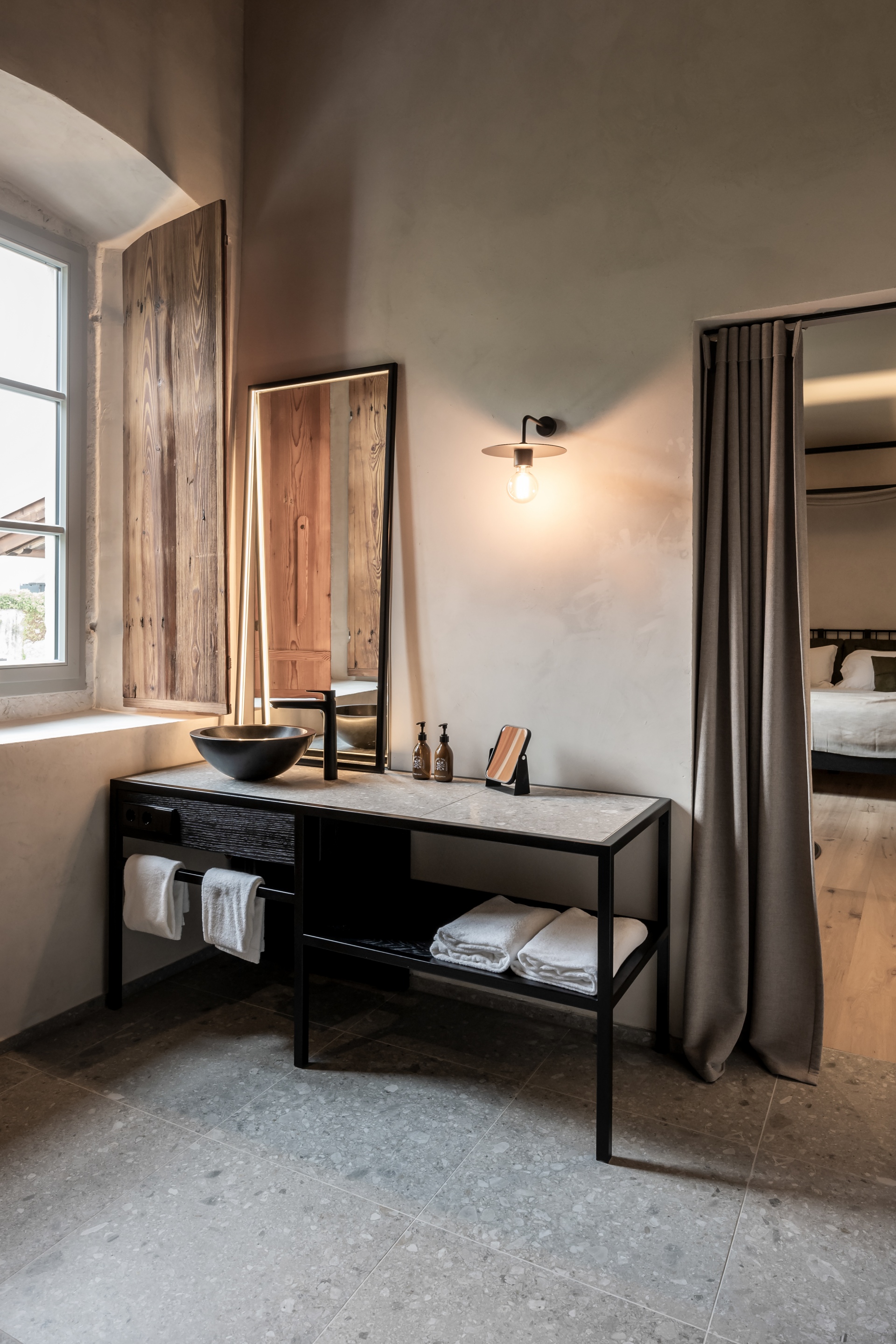
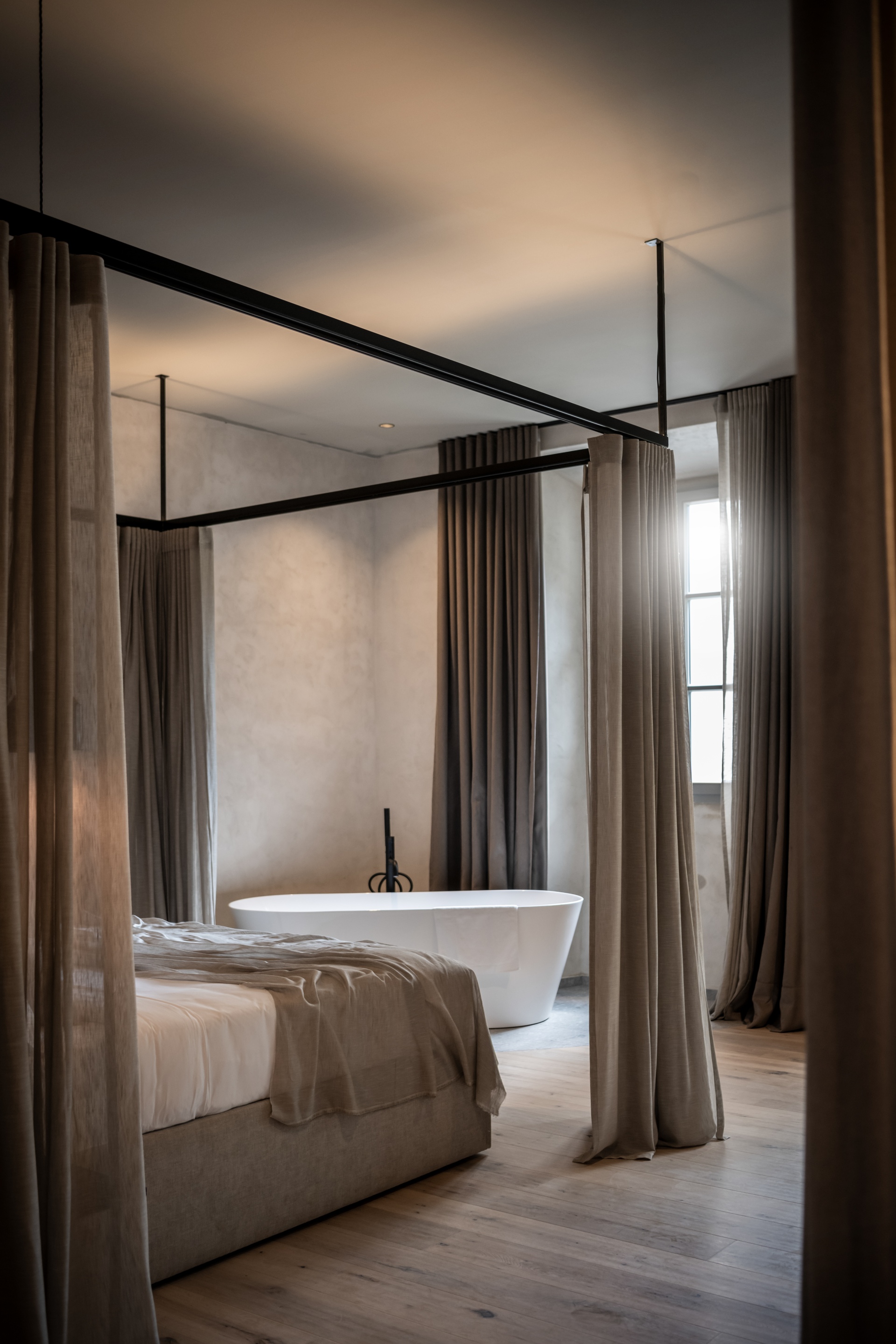
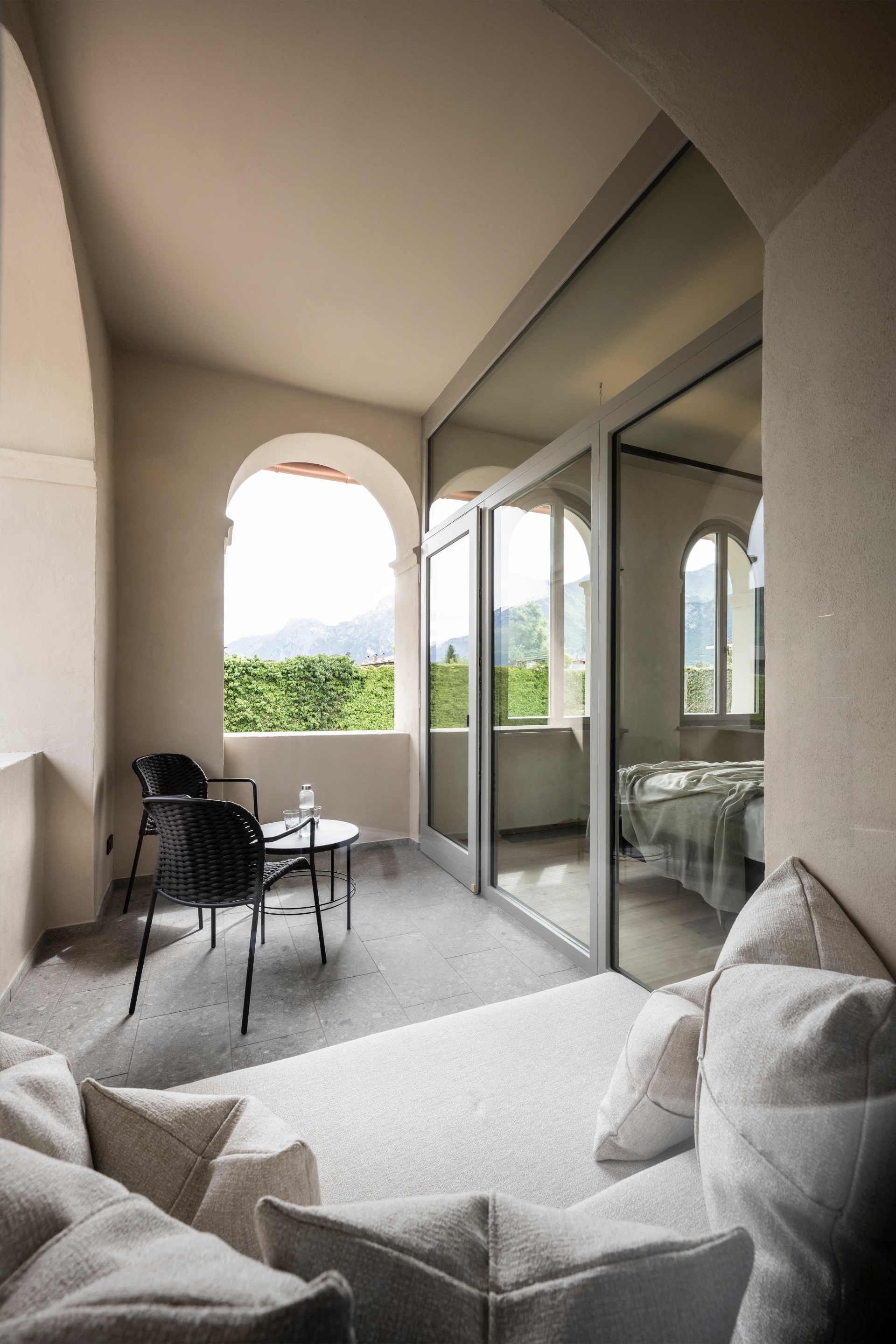
Completely enclosed by a 7-metre high boundary wall whose original appearance has been preserved, internally the monastery is distributed across three levels. “It is a bit of a surprise to discover that the spaces on every floor are structured in very different ways”, Padovan observes. “The concentric spaces of the ground floor contrast with the majestic corridor of the first and then there is the mass of wooden beams in the loft. We paid close attention to this variety of environments, developing solutions that did not alter the various designs but which strengthened their charm and originality”. As such, the development of the common spaces on the ground floor emphasised the existing plan of the monastery - located along the central axis is the reception, the breakfast room and a reading room/lounge, all embellished with beautiful rib vault ceilings and surrounded by a long continuous corridor. The bar and kitchen are also situated on the ground floor, as well as a suite with a private garden.
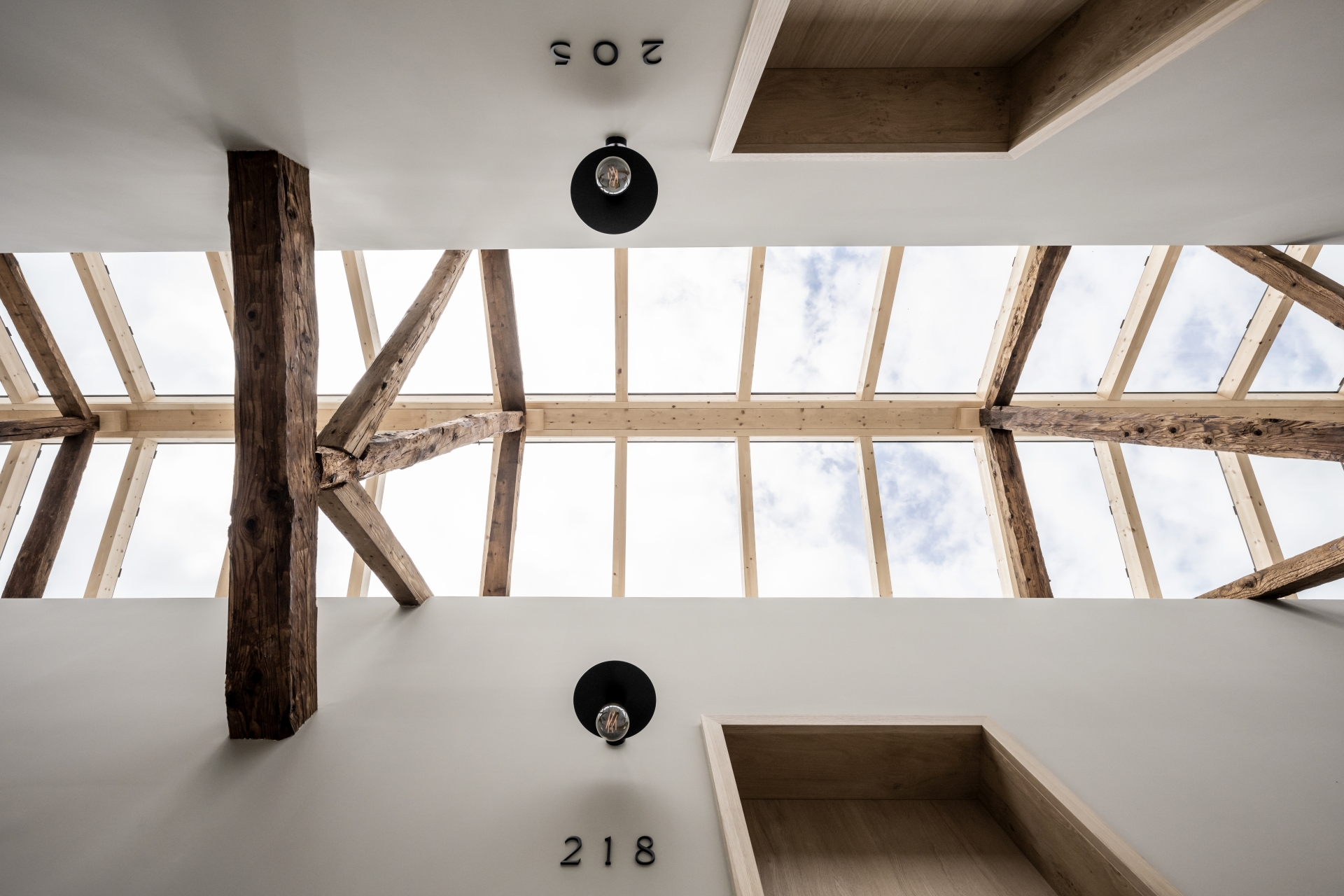
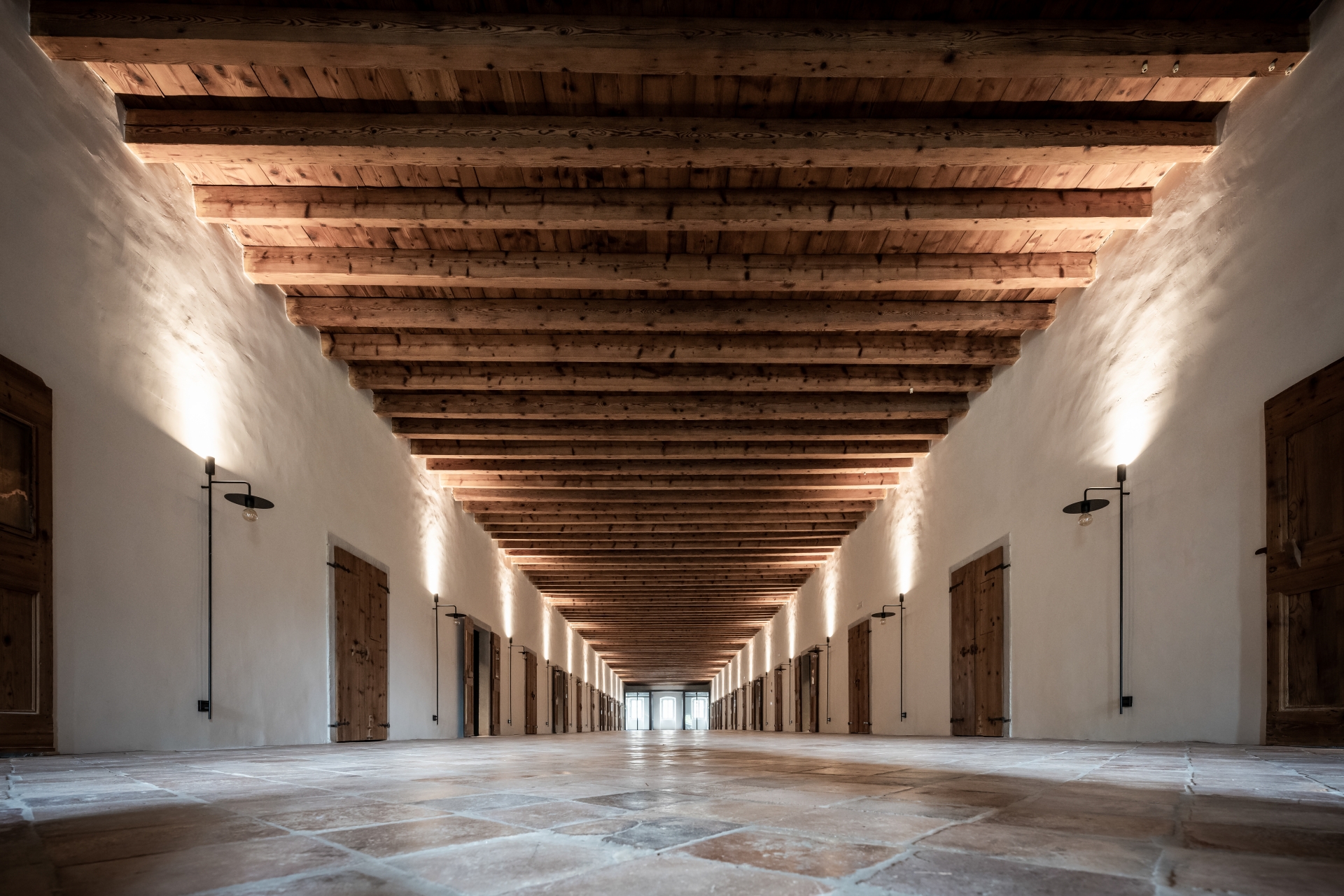
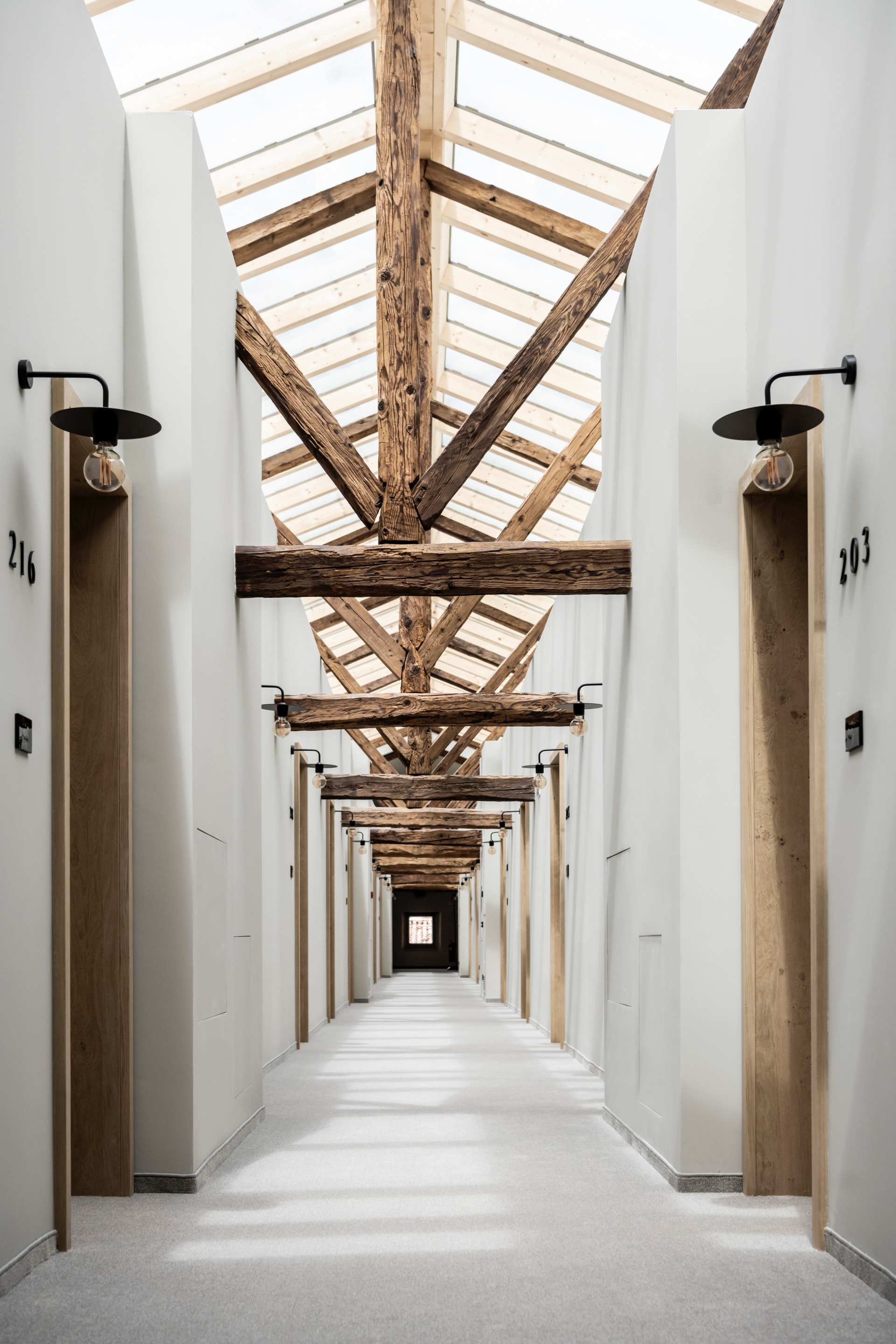
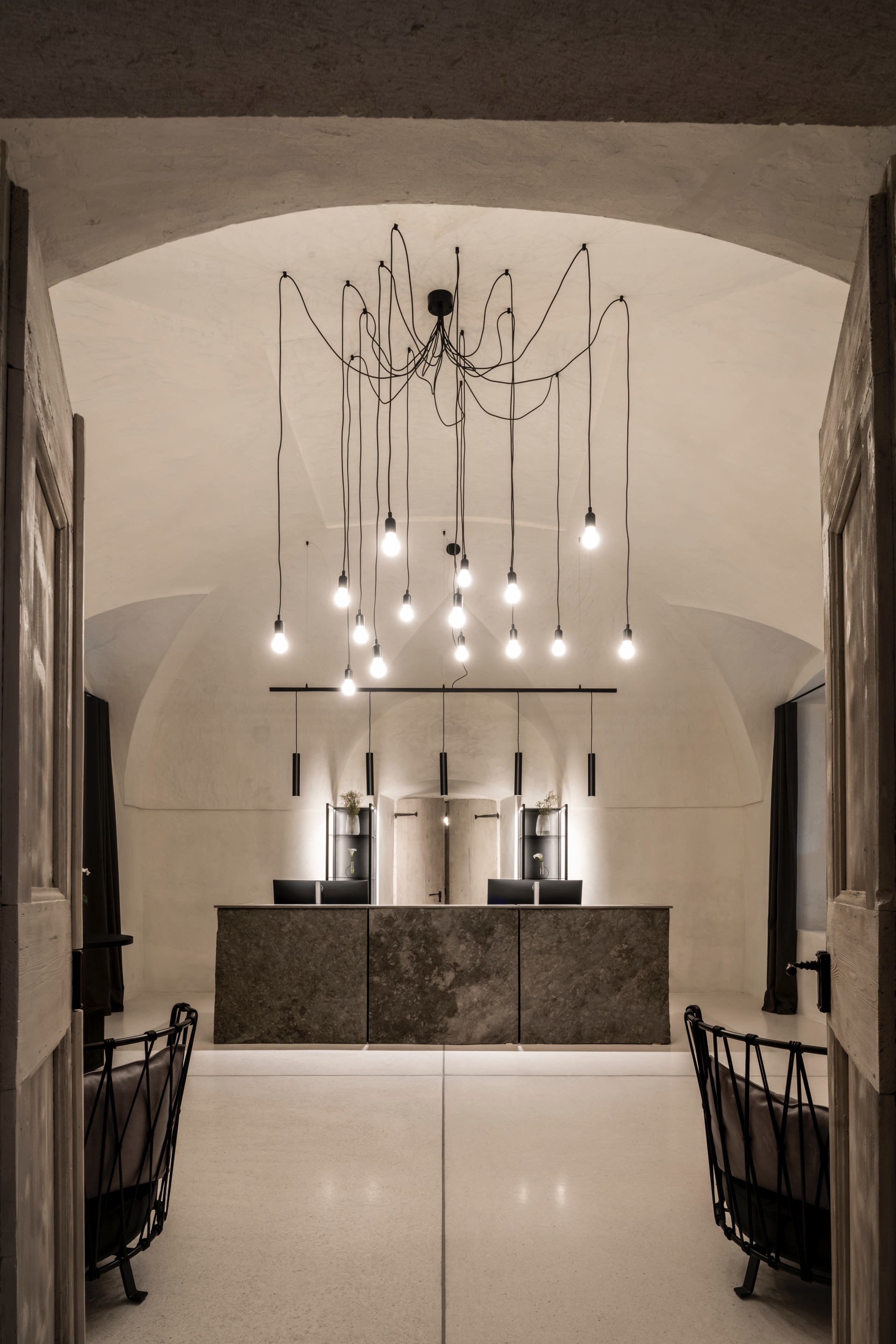
The scenery changes on the first floor where the majestic central corridor is lined by ceiling beams which stretch out to an impressive length of almost 50 metres. Here, the former monastic cells, aligned along the sides, were joined two-by-two to create larger rooms (from 22 to 30 square metres). In this way, in each room one ‘cell’ constitutes the bedroom, while the other hosts the bathroom. The old doors, in light wood, were all conserved on the external side, along the hallway, to maintain the striking spectacle of the entrances that dotted the long corridor. The first floor also offers one suite that was developed from the part of the building that originally hosted the wash rooms and bathrooms.The second floor is no less striking. A large loft area topped by eye-catching trusses, which host two lines of rooms that open out onto a long central corridor. The restored wooden trusses pay homage to their original function. At the highest point of the roof, a skylight runs right along the length of the ceiling, not only illuminating the corridor but also the rooms thanks to the transom windows.
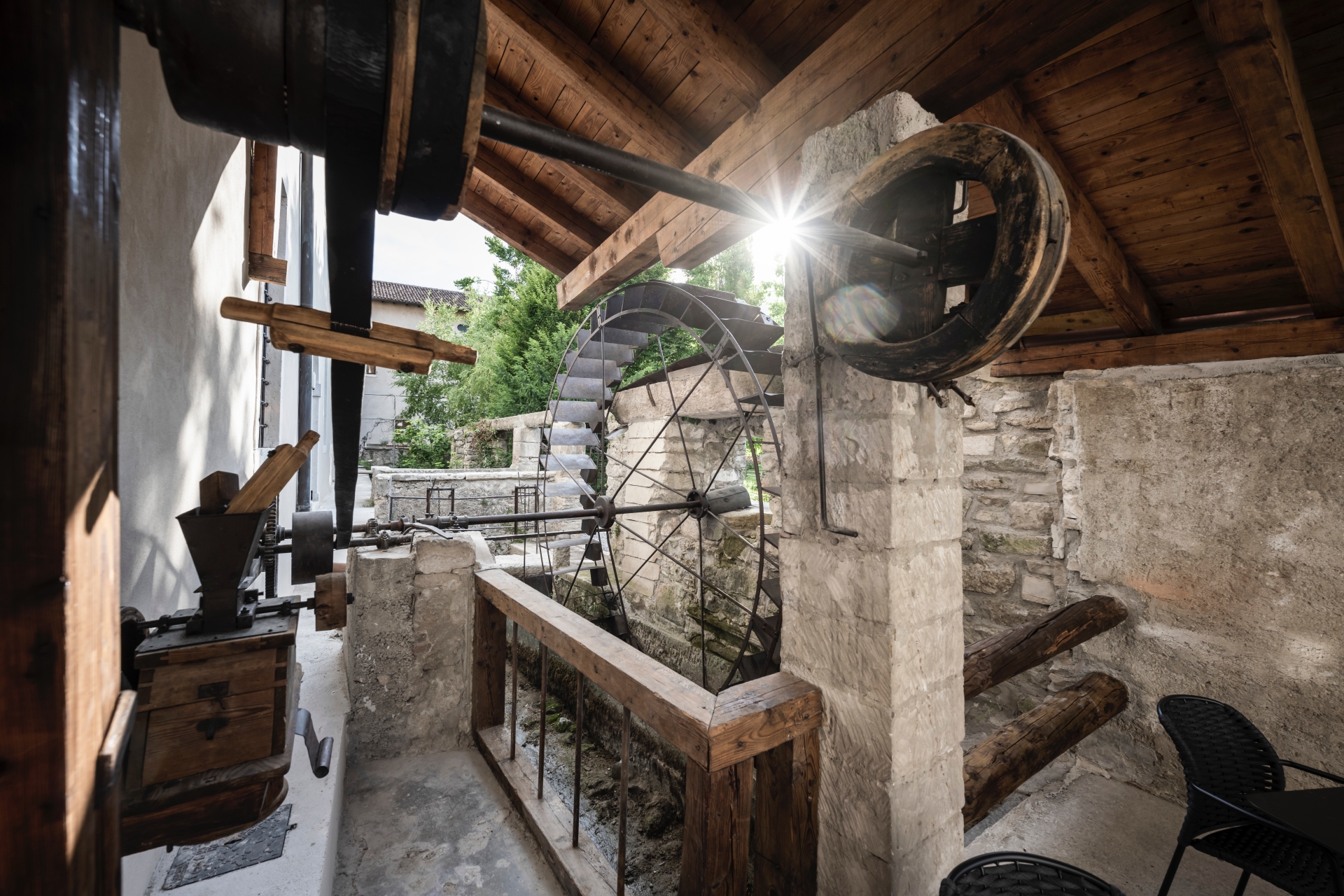
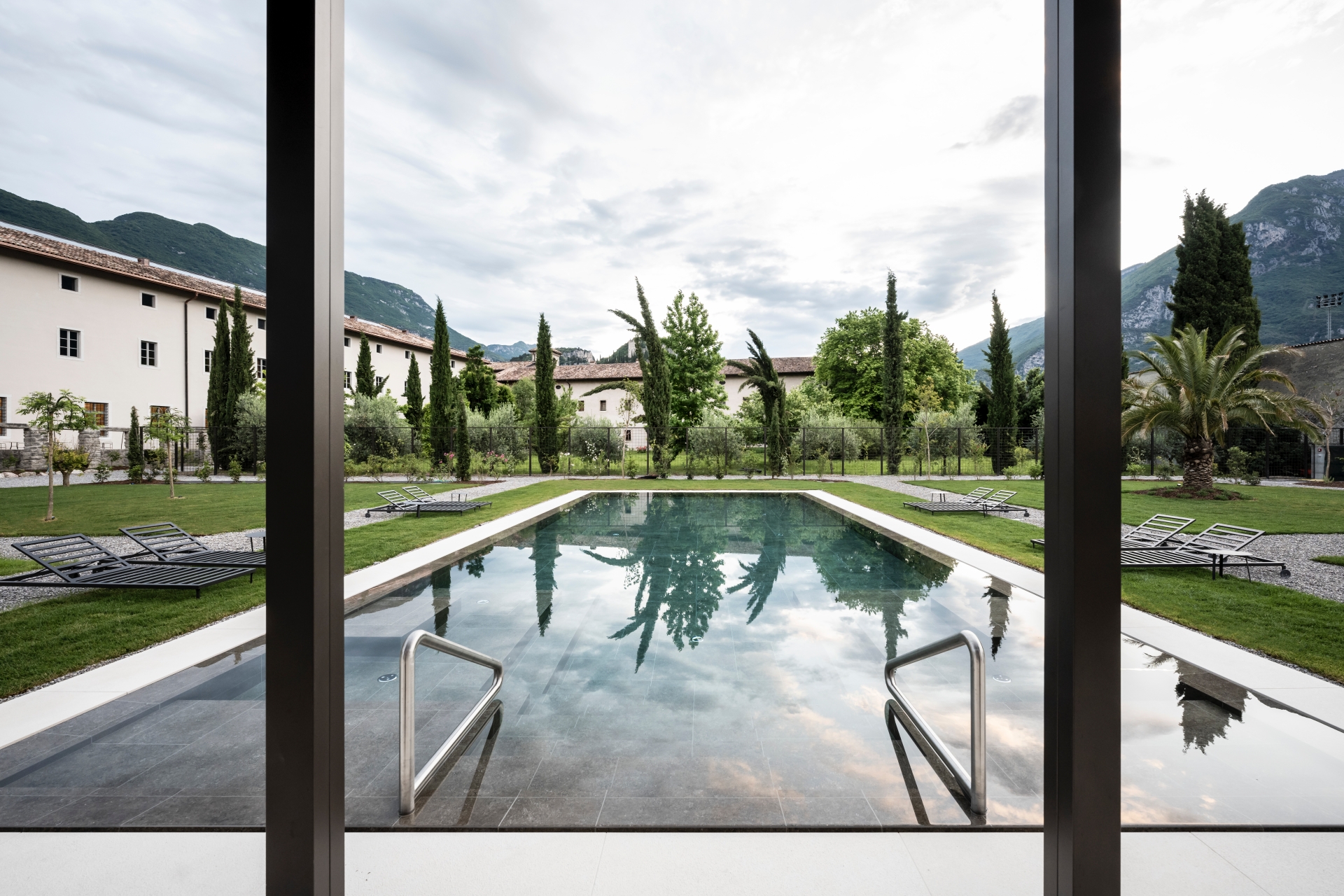
Newly-developed in the monastery garden, the spa consists of seven light glass and metal volumes positioned along a stone spine. The alternation of glass bodies and green courtyards creates an evocative pattern of advanced and set-back volumes. “When designing this area our aim was to create a dialogue more with the surrounding agricultural landscape than with the monastery, a little too ‘powerful’ in architectural terms”, explains Padovan. “To do this we used very simple elements with strong structural clarity. The light metal framework, organised in pillars and beams, is inspired by the characteristic lemon houses of rural Lake Garda”. The connecting spine - composed of a series of pillars covered in Vicenza stone, whose colours recall the pre-existing structures, and a horizontal architrave in pre-fabricated and sandblasted concrete - echoes the stone balustrade of the raised channel that runs along the eastern side of the convent. The wellness area includes a first relaxation area with loungers, a treatment area and a second relaxation area facing the ‘biolake’, a pool of natural water with dark blue tints. Next is a third relaxation area in an open gallery in the green courtyards, then the saunas (a bio sauna and a Finnish sauna) and a particular type of hammam or wellness course that revolves around a large heated dark stone.
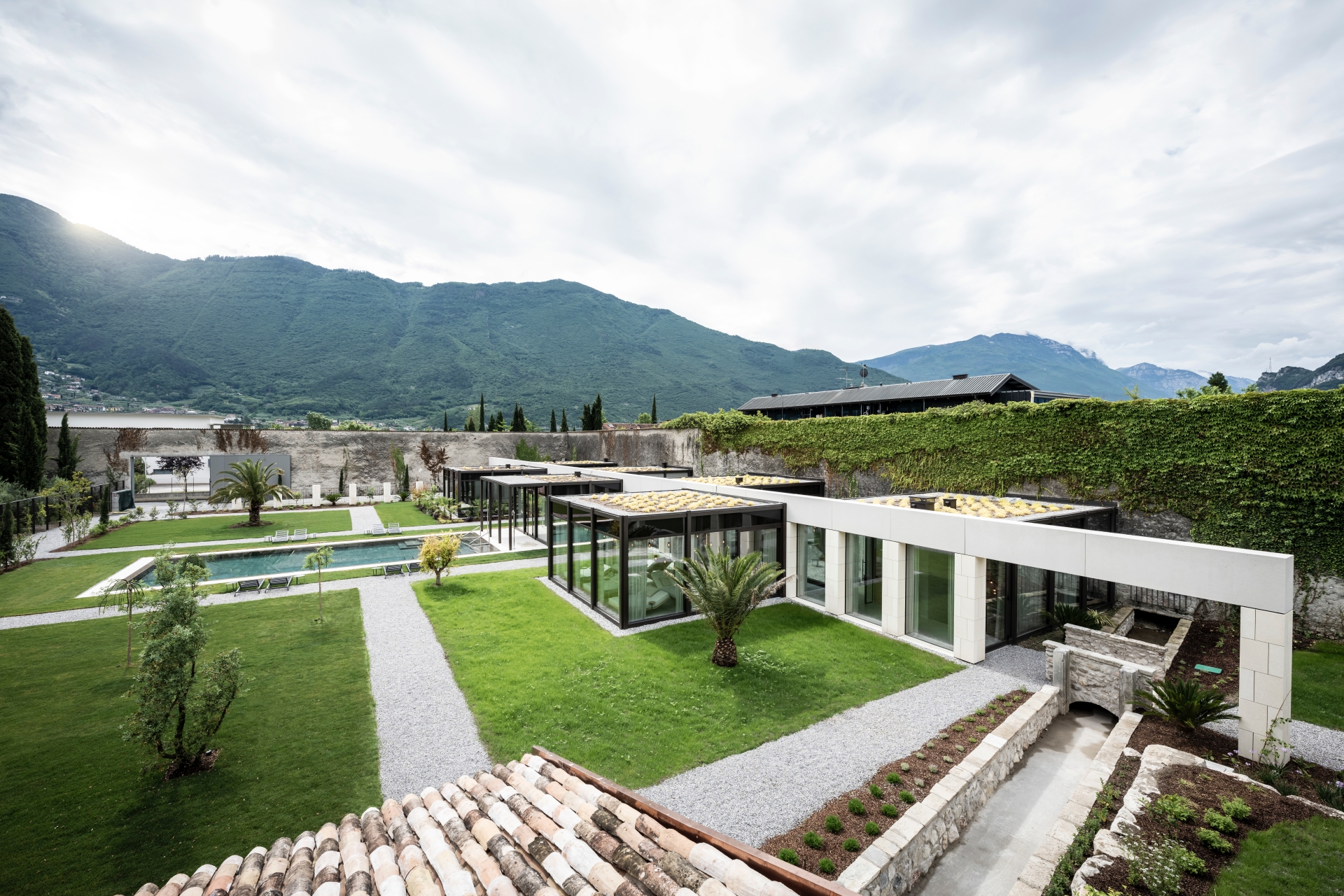
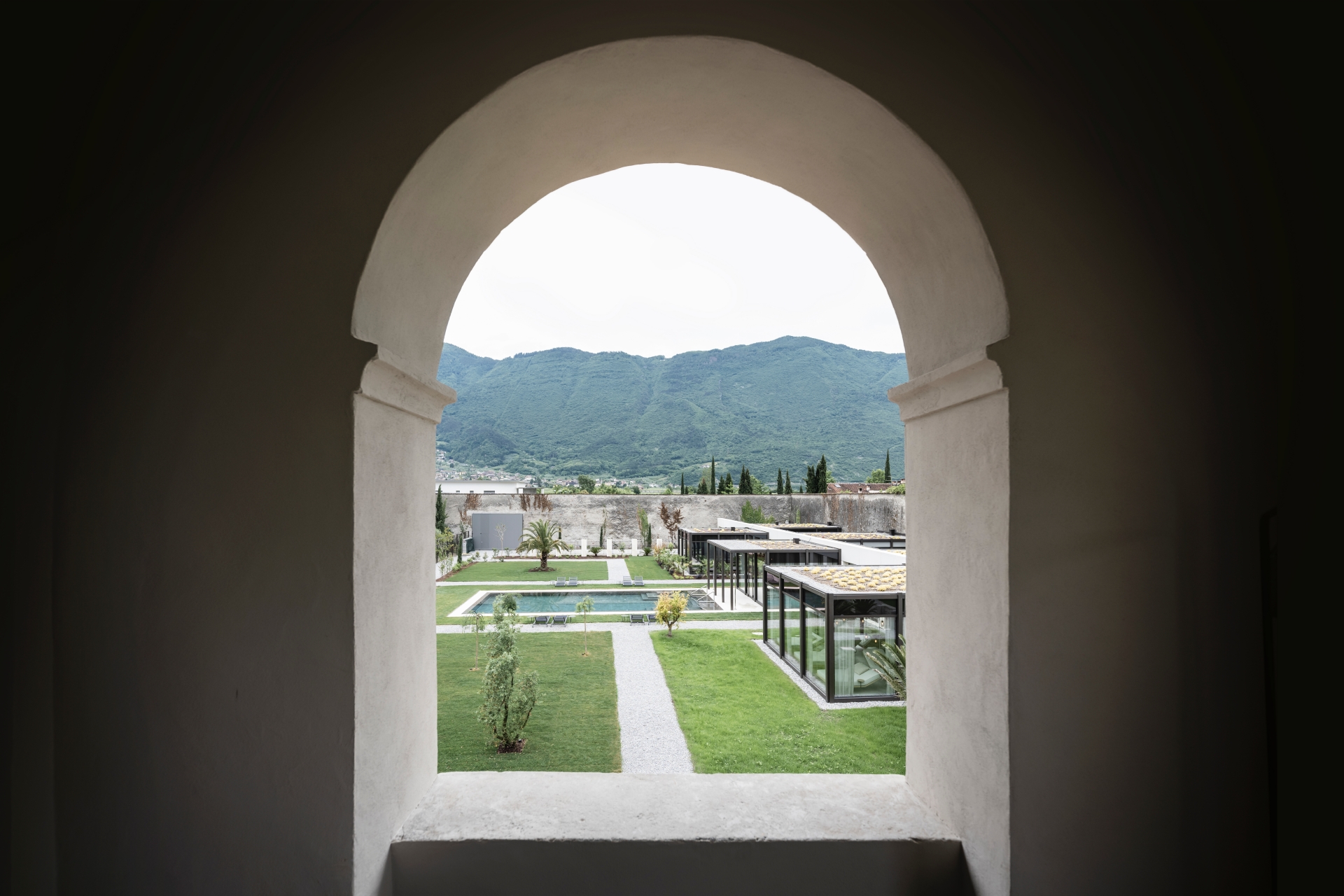
“The design project was guided by our complete respect for the existing architecture. The design was adapted to the austere monastic spaces with tailored solutions, without compromising on comfort, functionality and contemporary aesthetics”, explains interior designer Niccolò Panzani of noa*, who oversaw the interiors. The original ceilings and decorations in the common spaces on the ground floor were conserved and restored. The dominant shades are white, grey and black, the historic colours of the monastery.
